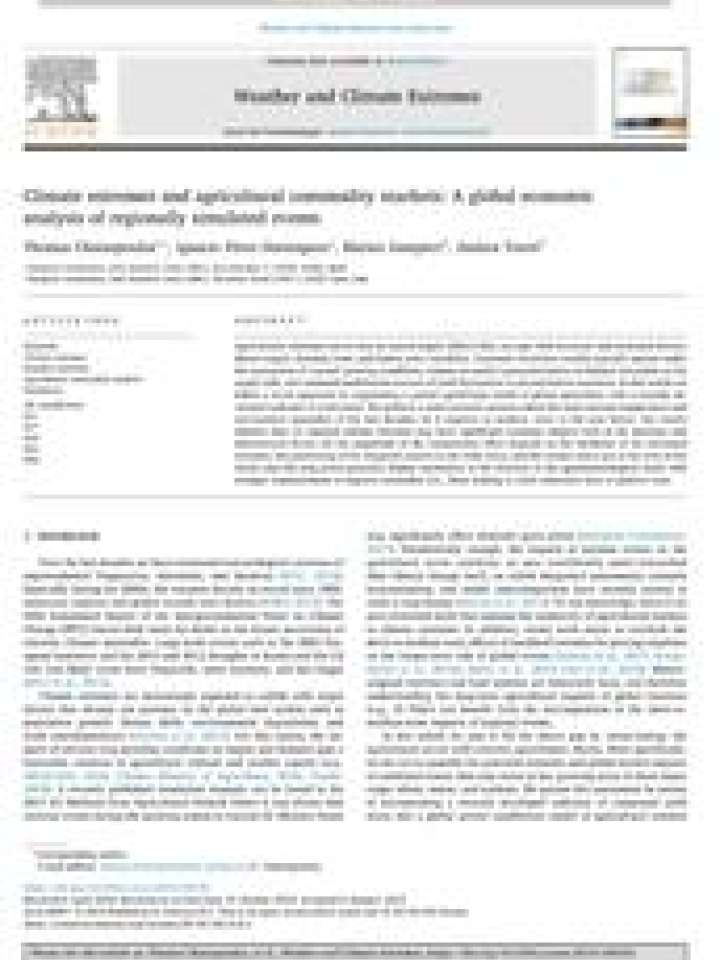Climate extremes and agricultural commodity markets: A global economic analysis of regionally simulated events
Agroclimatic extremes can be seen as typical supply shifters that, on par with economic and structural drivers, distort supply, demand, trade, and induce price variability. Economic simulation models typically operate under the assumption of ‘normal’ growing conditions, contain no explicit parameterization of climatic anomalies on the supply side, and confound multifarious sources of yield fluctuation in harvest-failure scenarios. This article follows a novel approach by augmenting a partial equilibrium model of global agriculture with a recently developed indicator of yield stress. The authors perform a multi-scenario analysis where the most extreme temperature and soil-moisture anomalies of the last decades, be it negative or positive, recur in the near future.
The results indicate that: (i) regional climate extremes may have significant economic impacts both at the domestic and international levels; (ii) the magnitude of the transmission effect depends on the attributes of the simulated extremes, the positioning of the impacted country in the trade arena, and the market status quo at the time of the shock; and (iii) crop prices generally display asymmetry to the direction of the agrometeorological shock with stronger responsiveness to negative anomalies (i.e., those leading to yield reduction) than to positive ones.
Explore further
